Lavender! As beautiful as it looks, it smells even better. Because of its soothing color and scent, we’ve fallen in love with it. And now we want it everywhere!
Aside from its charm, lavender has antioxidant, antimicrobial, and anti-inflammatory properties. You’ll also find many people using it as a stress reliever. So, planting lavender plants in your backyard or garden seems like a good idea.
But does lavender grow back every year and give the same effect? Yes, these plants are perennial and bloom every year after Winter. Moreover, if you care for them properly, they will brighten your garden for many years.

- Factors Affecting Lavender Growth
- Regrowth of Lavender Plants
- Lifespan of Lavender Plants
- Perennial Nature of Lavender
- Care and Maintenance of Lavender Plants
- Winter Protection for Lavender
- Propagation of Lavender
- FAQs About Lavendar Growing Back Every Year
- Final Thought on Does Lavender Grow Back Every Year
Factors Affecting Lavender Growth
Some lavender plant types can’t survive in cold winter months, like Spanish and French Lavenders. But if you have English Lavender plants, they will sprout beautifully after the cold winter.
However, their growth depends on some factors that you should look into.
- Soil Requirements for Lavender
Lavenders are typically one of the easiest maintenance plants out there. They don’t need much attention as long as you get their soil property right.
Lavender plants can’t survive in damp or humid soil; they must be planted in high-drainage soil mixed with sand for more drainage support. They also thrive in alkaline soil with a pH of 6.5 to 7.3.
Moreover, you’ll be happy to know that lavender doesn’t need fertilizer. The more alkaline and chalk the soil is, the better. It helps with hardiness and enhances their aroma.
- Sunlight and Temperature Needs
Lavender plants love sunny weather and hate cold temperatures. They thrive most when you keep them under full and direct sunlight. If you want to plant them indoors, make sure they get at least six hours of sunshine daily.

Moreover, very chilly weather usually kills many lavender plants as their roots receive too much moisture and humidity. Wet roots also cause rot and pest infestation, which will wither your plant. So, keep your lavender plants’ soil temperature over 65°F (18°C) to see them bloom.
- Watering and Drainage Considerations
Although lavender plants don’t like moisture, they’re pretty drought-tolerant and can survive even in severe conditions.
However, your plants may face fungal diseases, pest infestation, and root rot due to excess water. They need plenty of water in summer when you first plant them, and after that, only water the base of the soil when it seems dry.
Moreover, when you plant them in pots, lavender plants need a proper drainage system. Even using terracotta or clay pots, you must make drainage holes for excess water to seep out.
- Nutrient Requirements for Lavender
Lavenders are the best as they require little to no fertilizers, but if you still want to add some, you can mix slow-release organic fertilizers with the soil before you plant them.
Moreover, although fertilizer isn’t necessary, lavender plants need Nitrogen to survive. Nitrogen also helps make the plant more hardy and vibrant. But remember, even excess Nitrogen can harm them!
Recommended Fertilizer for Lavender
| Image | Titre | Prime | Acheter |
|---|---|---|---|
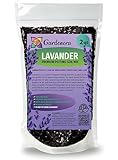 | GARDENERA Lavender Planting Medium - Create a Serene and Fragrant Garden Oasis - 2 QUARTS | PrimeAdmissible | Vérifiez mon prix sur Amazon |
Haut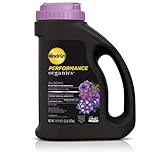 | Miracle-Gro Performance Organics Blooms Plant Nutrition Granules - Plant Food with Natural & Organic Ingredients, for Flowering Plants, 2.5 lbs. | PrimeAdmissible | Vérifiez mon prix sur Amazon |
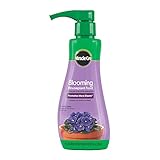 | Miracle-Gro Blooming Houseplant Food, 8 oz., Plant Food Feeds All Flowering Houseplants Instantly, Including African Violets | PrimeAdmissible | Vérifiez mon prix sur Amazon |
 | Gardenera Premium Lavender Potting Mix - Nourish Your Lavender Plants for Beautiful Blooms - 1 Quart | PrimeAdmissible | Vérifiez mon prix sur Amazon |
 | Osmocote Smart-Release Plant Food Plus Outdoor & Indoor, 1 lb. | PrimeAdmissible | Vérifiez mon prix sur Amazon |
 | Miracle-Gro 1001921 Water Soluble Flower Food, 1.5 lb | PrimeAdmissible | Vérifiez mon prix sur Amazon |
Regrowth of Lavender Plants
Usually, annual plants don’t grow back, and you need to plant them again. That’s not the case for lavenders!
Lavenders are perennial plants and regrow yearly when you maintain them properly.
- Lavender Growth Cycles
If you already have lavender plants, they will go through dormant, spring growth, flowering, post-flowering, and late-season growth phases.
Your lavender plants will become dormant during the chilly winter, and their leaves will also fall out. Then when the temperatures rise again in the spring, the plant will grow new leaves and even buds!
In the flowering phase, your lavender plants will have beautiful spikes of flowers and also attract bees and other pollinators to your garden. But this depends on how you care for them.
However, their growth will decrease in the post-flowering phase, and flowers will start losing their vibrant color. You will still see new leaves and development, but at this point, your plant has already begun saving nutrients and energy.
Later during their late-season growth, they will slowly return to their dormant phase to show their beauty the following year. And the lifecycle goes on for over ten years if you do everything right!
- La lavande repousse-t-elle chaque année ?
If you love enjoying this herbaceous lavender plant, you’ll be happy to know they’re perennial and will grow back every year under the right climate.
Lavender plants are mainly native to the Mediterranean region, so they love dry, sandy, alkaline soil and direct sunshine. Many people mistake this plant for being annual as they quickly freeze to death during frigid winters.
However, if you have English Lavender plants, you can keep them in good shape each year and enjoy their beauty. Just remember to take most care of your plants during winter.
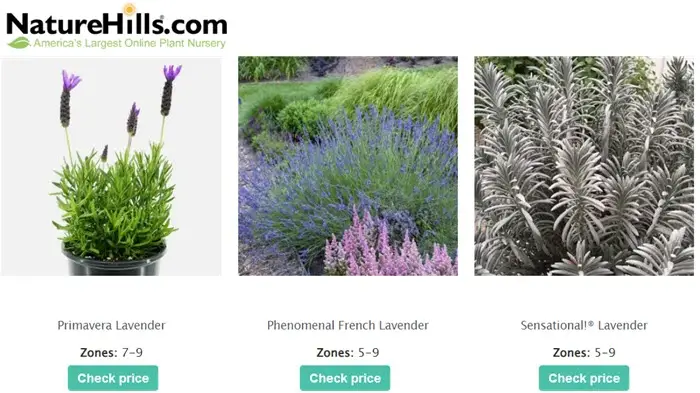
Lifespan of Lavender Plants
How long will you have your beautiful lavender plants? Well, it’s definitely going to be in your backyard for a long, long time!
- Typical Lifespan of Lavender
If you didn’t know, on average, lavender plants’ lifespan is 10 to 15 years with proper maintenance and care. However, their growth and population will decrease after ten years even if you maintain them well.
- Factors Influencing Lifespan
Your lavender plants’ lifespan depends on various factors, and here are the key ones.
- Climate and growing conditions
- Soil quality, pH, and drainage system
- Watering habits
- Maintenance and pruning
- Pests and diseases
- Type of lavender plant
- Growth from seed or cutting
- Winter Care
Perennial Nature of Lavender
By now, we know a lavender plant is a perennial, but what does it mean? If you’re confused like we were, let us help you on your journey of lavenders.
- Understanding Perennial Plants
You will find various perennial plants worldwide, usually shrubs or trees. Some live only five years or less (Tulips, Bee Balm, etc.), while others, like the Oak and Redwood, outlive many of us.
Moreover, perennial plants lose leaves or become dormant during winter to store their energy to bloom and bear buds and fruits in spring and summer. This cycle keeps continuing until its very end.
So, you can say that a perennial is any plant that survives for more than 3 or 5 years.
- Is Lavender a Perennial Plant?
Lavender plants are herbaceous plants that live longer than two years. They also have semi-woody and herbaceous growth each year, making them botanically perennial.
However, lavender has specific climate requirements that need to be met to keep them beautiful and, of course, alive. If you live in the West or in hot climes, your lavender plants will have extraordinary growth and will survive longer.
Care and Maintenance of Lavender Plants
Care and maintenance go a long way for anything, which is true for lavender plants. If you’re confused about how to do it, no worries; we’re here to help you.
Pruning Lavender
Pruning your lavender plants is essential in keeping them healthy, maintaining their shape, and increasing their lifespan. So, let’s dive into it!
- Timing is key: You must prune in the early spring or after blooming to keep your plants in shape and happy. But you should never prune in fall or winter as it will damage its flowering ability and overall health.
Moreover, avoid cutting the plant’s woody stems and only cut a little bit of the new growth.
- Sticking to the pruning method: You need sharp scissors or shears to avoid damaging your beautiful plants. Always make clean and sharp cuts just above the leaf node or new leaves and watch the wonder of growth.
- Maintain shape and size: If you want to keep your lavender shrubs bushy and unique, you must cut one-third of the plant’s height and make sure not to cut the woody stems. Otherwise, your plant will have trouble growing and developing new foliage.
- Always clean up: Pruning will leave you with dead leaves, twigs, branches, and waste. It leads to pests and diseases and eventually kills your plants. So, it’s better to clean up than to suffer.
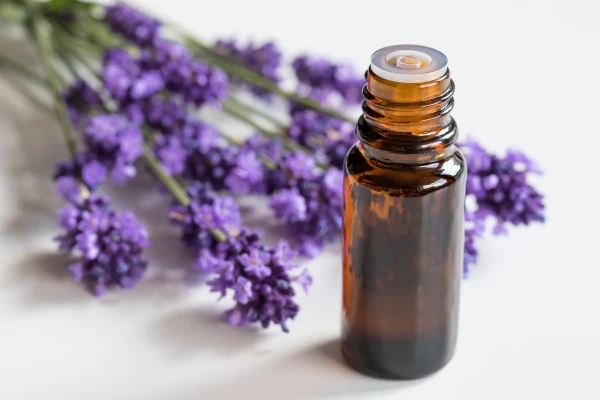
Deadheading Lavender Flowers
Deadheading lavender flowers is helpful for the plant as it diverts the energy to the new growth and buds that need it instead of supplying it to the wilting ones.
Moreover, you can easily deadhead them after spring and in early summer to use them for various soaps.
So, if you want to reap the benefits of deadheading lavenders, here’s how you can do it:
- Avoid the buds and new flowers.
- Look for flowers that are fading and are at the top of a stem.
- Use a sharp shear or scissor to cut above the leaves on that same stem.
- Keep repeating the same for the next stem.
Pest and Disease Control for Lavender
Pests are everywhere, and your lavender plants might get infested if you don’t pay attention. However, if you already see some pests, here are some natural tips to keep those critters away.
- Spray Neem Oil: This oil has natural insecticidal effects that keep insects away and also fungal diseases. Mix a spray bottle with some water and spray generously on your plant.
- Use beneficial insects: Did you know ladybugs, parasitic wasps, etc., are natural pest destroyers? You can get ladybugs and release them on your lavender plants; they will take care of the remaining.
- Use soap: Any liquid dish soap will come in handy to eliminate whiteflies, aphids, and tétranyques. Just mix some with water and spray it on the affected parts of the plants.
Winter Protection for Lavender
As lavender plants can’t survive in the winter, you need to do your part and take some extra precautions and measurements. When you prepare and practice care steps for winter, your plants can survive the harsh cold weather.
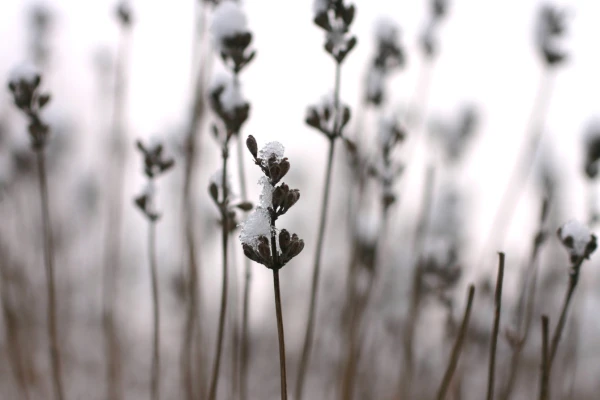
Preparing Lavender for Winter
Before winter, you must prepare your lavender plants for the cold. You can easily do it with the following steps.
- Ensure the drainage system is working. Always check if your lavender plants still have a way to drain excess water.
- Utiliser paillis around the roots if you live where the ground freezes and thaws again. Mulch ensures your plants don’t have root rot.
- Always prune in early fall. It helps store energy when your lavender plant is dormant instead of wasting it on unnecessary parts.
Winter Care Practices
Even when you have prepared your lavender plant for winter, you need to take care of them throughout the cold season.
The best way to do it is to practice winter care.
- Keep your potted lavender plant in a well-ventilated garage, basement, or dry area. It helps the plant become dormant.
- Make sure your plant’s soil is completely dry during its dormant period. However, don’t forget to water it sometimes.
- If it rains or snows where you live, you don’t need to water your lavender plants in the winter.
- If you have potted plants, make sure they are in a dry place. Put them in the sun whenever there’s some sunshine available in the winter.
Propagation of Lavender
If you’re curious to get your own hands on some beautiful lavender plants, then you’re at the right place! We will help you grow your own lavender plants from seeds, cuttings, and by dividing.
Cultiver de la lavande à partir de graines
If you want to grow lavender from seeds, remember it’s time-consuming. But the result will be worth it!
Buy some seeds and mixed soil with nutrients and sand from a nursery. You can use ice cube trays as seed trays because they are convenient. Then you will need to do cold stratification to speed up the germination process of the seeds.
Now, just put one or two seeds in the seed tray and keep them under direct sunlight until they start to sprout. Just ensure they don’t dry up, stay between 60°F and 70°F, and no bugs infest your tray.
When they sprout and grow a little more, transfer them to a pot or in your garden and watch them grow.

Propagating Lavender from Cuttings
Growing lavender from cuttings is a good idea because, in this way, you don’t have to wait for it to sprout. Here are the simple steps to help.
- You need to choose from where you plan to get a cutting. It can be from a stem or leaf node.
- Always use sharp gardening shears or scissors for cutting. Make sure they are clean and sanitized.
- You will need to take at least 3 to 6 inches of cutting from a lavender plant.
- Remove any leaves and put the stem in a Rooting Hormone. It will help get the required hormones to grow.
- After a few days, you should place your cuttings in a soil tray made for them. Remember only to plant it in about 2 to 4 inches.
- Place your cuttings in a warm, sunny place, and don’t overwater them.
- Check your cuttings for roots in two weeks. Usually, softwood cuttings take 2 to 3 weeks to grow roots, whereas hardwood cuttings take about 5 to 6 weeks.
- You can put them in clay pots or plant them in your garden after they grow roots.
Division of Lavender Plants
You can easily divide and multiply your lavender plants. Here are some simple tips to help.
- You need to choose a healthy and fully matured lavender plant.
- Carefully dig up the plant without damaging its roots.
- Try to find the natural divisions of the plant.
- Use a sharp gardening tool to separate the plant into smaller clumps.
- Trim the roots and replant them in your garden at the same depth.
- Water as needed and take care of your plant as usual.
Pour plus de lecture
- Cultiver de la lavande à partir de graines
- La lavande espagnole dévoilée : un guide complet de culture et d'entretien
- Sauge russe contre lavande
- À quelle fréquence arroser la lavande ?
FAQs About Lavendar Growing Back Every Year
You should prune lavender to encourage growth but only in the spring, early summer, and fall.
You can easily grow lavender in pots or containers. Make sure to use clay or terracotta pots because it’s great for keeping the soil dry.
Of course, you can use lavender in many other things. You can make lavender syrup, cookies, home decor, garnish, etc.
Lavender plants hate cold temperatures and can’t survive in them unless they have protection.
You can grow lavenders inside your home. Just make sure to give it lots of sunlight for it to thrive.
Final Thought on Does Lavender Grow Back Every Year
Lavender plants can make any garden look stunning with its fantastic color and sweet scent. Although they are easy to grow, they need your care to thrive. So, if you plan to grow some, follow our given steps and make sure you’re not overwatering.
Moreover, lavender plants will grow back each year after the harsh winter months, but you need to give some extra TLC to keep them alive during their dormant phase.

Darrell a une passion pour le jardinage qu'il a héritée de son père. Aller ici pour en savoir plus sur l'influence que son père a joué dans son amour pour le jardinage. Si vous souhaitez envoyer un message rapide à Darrell, rendez-vous sur sa page de contact ici.

![Comment arroser les plantes d'intérieur [Plant Care 101]](https://wraxly.com/wp-content/uploads/2021/03/How-to-Water-Indoor-Plants-Plant-Care-101-1200-1024x576.webp)

![Cultiver des plantes à partir de boutures [Un guide simple]](https://wraxly.com/wp-content/uploads/2021/03/Growing-Plants-from-Cuttings-A-Simple-Guide-1200-1024x576.webp)